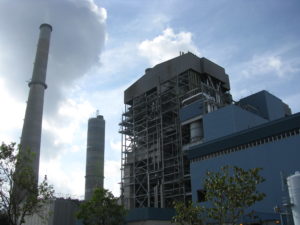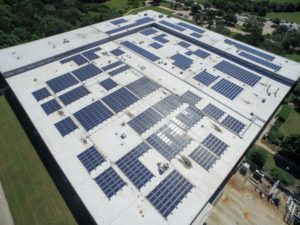A rate case is fundamentally about determining how much money an electric utility needs to collect from ratepayers to pay for expenses (and make some return on investment), how those expenses will be divided among the different customer classes (residential, commercial, industrial), and how customers in those different rate classes will be billed. It’s probably obvious that these decisions can impact affordability and equity among customers. Rate cases can also have significant environmental impacts though.
The Austin Energy rate case is an opportunity to make changes that can allow the utility to transition away from fossil fuels and towards greater reliance on clean energy solutions, including solar energy at homes and businesses, energy efficiency, energy storage and demand response (temporarily reducing usage when energy demand and prices spike). What the utility spends money on, what programs are offered, and how rates are designed have profound impacts on climate change, air quality, water pollution, water use, land use – all of which impact society in a variety of ways, including public health and vulnerability to natural disasters. So, it might sound boring at first, but if you care about the environment or social equity, you should care about how your electric utility is doing business.
What we’re advocating for:
-
Budget to allow Austin Energy’s portion of the coal-fired Fayette Power Project to retire. It is responsible for 80% of Austin Energy’s greenhouse gas emissions (and over 28% of Austin’s greenhouse gas emissions from all sectors). It’s also a major source of other air pollution that causes and worsens respiratory diseases (sulfur dioxide, and nitrogen oxides – which contributes to ground level ozone formation) and cause neurological disorders mercury. And it requires over 5 billion gallons of water to operate. The latest adopted plan for Austin Energy calls for the retirement of the utility’s portion of Fayette by 2023, and Austin Energy staff say its remaining debt associated with the plant must be paid off before it can be retired. The plan calls for that money to be collected in a dedicated fund through annual budgeting, but that isn’t happening, putting the retirement plan at risk. Please use our action page to email City Council about budgeting to retire Fayette.
- Maintain residential rates that encourage energy conservation and allow thrifty customers to keep their bills low. Austin Energy has proposed to increase electric rates for those who use the least energy and reduce them for those who use the most. For those trying to reduce their electric usage for environmental reasons or because their household budgets are strained, Austin Energy’s proposal will increase bills. Austin Energy’s proposal will also make it more difficult to project from year to year how higher much summer rates will be from winter rates. Both of these changes would reduce the incentive to conserve energy and invest in energy efficiency upgrade. And these changes were proposed despite a study that Austin Energy commissioned that said that the existing rate structure is succeeding in encouraging conservation. These proposed changes to how residential customers are billed would be a step backwards.
-
Adopt a policy to fairly compensate businesses for energy they produce from solar energy systems. The City Council has adopted goals solar energy on homes and businesses, but Austin Energy’s current policy doesn’t include any way for most commercial customers to receive compensation for the energy they provide to the utility. Incentives have temporarily filled that gap, but they are coming to an end. The value of solar (VoS) rate is used to provide bill credits to residential customers, based on the calculated value of local distributed solar energy. The same method should be used to compensate commercial customers. Making this policy change will help grow solar adoption, while shifting away from incentives.
- Ensure that enough money is collected to fully fund energy efficiency, solar energy and demand response programs. Helping customers reduce their electric bills by making energy efficiency improvement or install solar energy systems doesn’t just benefit those customers who participate in those programs, it benefits all customers by allowing the utility to avoid purchasing expensive power that would drive all of our bills up. The Energy Efficiency Services fee is used to collect money for this purpose. With more people moving to Austin all the time, Austin Energy needs to ensure that budgets are set to match the need for local energy improvements.
Public Citizen and Sierra Club jointly participated in the Austin Energy rate case over the past several months, in an effort to push the utility to make environmentally sound decisions about both spending and billing customers. That was just a warm-up for the real decision-making process though. Because Austin Energy is owned by the city of Austin, the Austin City Council will make the final decisions about the rate case. That’s where you come in. City Council members, including Mayor Adler, need to hear from Austin Energy customers. There will be a public hearing on Thursday, August 25th at 4:00 p.m. at City Hall. Meet at 3:00 p.m. for a rally to support fair rates that meet Austin’s environmental goals.




